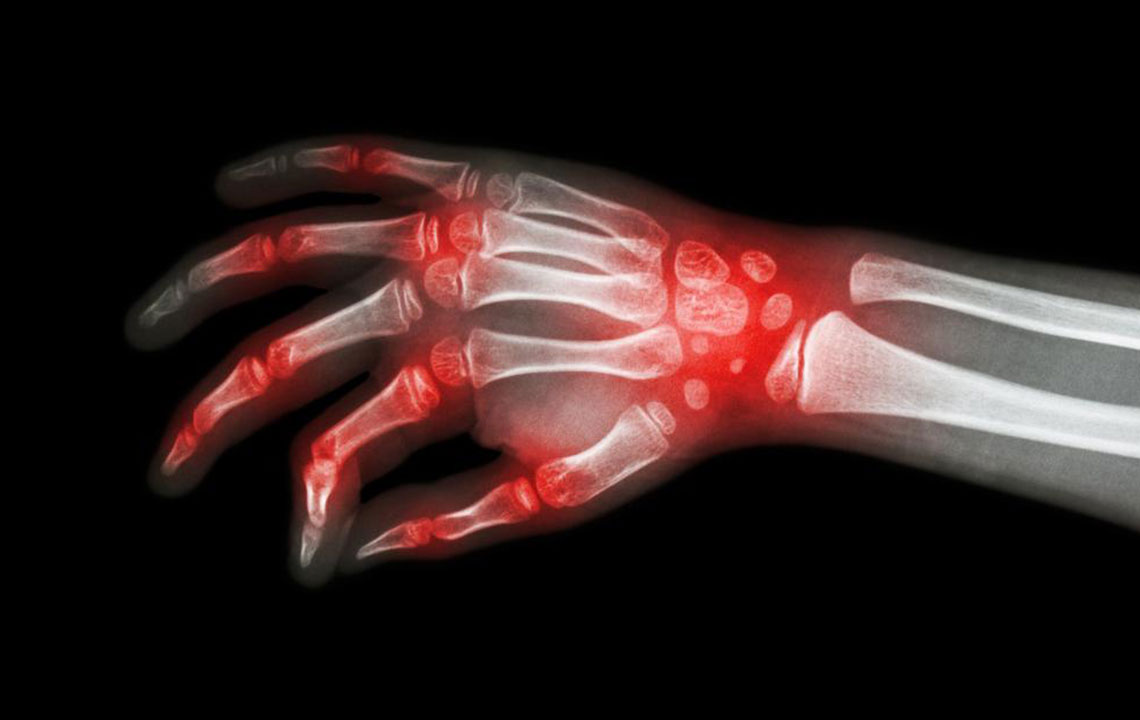Comprehensive Comparison of Rheumatoid Arthritis and Lupus: Symptoms, Causes, and Management
This comprehensive article explores the similarities and differences between rheumatoid arthritis and lupus, detailing their symptoms, causes, diagnostic challenges, and treatment options. Understanding these autoimmune diseases helps in early diagnosis and effective management, improving patient quality of life. The guide emphasizes the importance of personalized treatment plans and highlights advances in therapies that can mitigate long-term complications. Designed for both patients and healthcare providers, it aims to demystify these complex conditions and promote proactive health strategies.

Understanding the Key Similarities and Differences Between Rheumatoid Arthritis and Lupus
Rheumatoid arthritis (RA) and systemic lupus erythematosus (commonly called lupus) are both chronic autoimmune diseases that affect millions of individuals worldwide. Despite their distinct diagnostic criteria, these conditions often get confused due to their overlapping symptoms, especially in the early stages. Recognizing the similarities and differences between RA and lupus is vital for accurate diagnosis, effective management, and personalized treatment plans. This comprehensive overview delves into the causes, common symptoms, diagnostic challenges, and treatment strategies for these autoimmune disorders, empowering patients and healthcare providers with valuable insights.
The human immune system is designed to defend the body against harmful pathogens such as bacteria, viruses, and fungi. However, in autoimmune diseases like RA and lupus, the immune system becomes dysregulated and mistakenly attacks the body's own tissues, leading to inflammation, tissue damage, and a myriad of clinical symptoms. Both conditions primarily impact women, particularly those of reproductive age, although they can also affect men and children. Understanding how these diseases manifest, how they are diagnosed, and how they are managed can significantly improve patient outcomes and quality of life.
Shared Symptoms of Rheumatoid Arthritis and Lupus
A notable aspect of RA and lupus is their symptom overlap, which can complicate early diagnosis. Several symptoms are common to both conditions, reflecting widespread inflammation and immune dysregulation.
Joint Pain and Swelling: Both diseases often feature joint discomfort characterized by pain, tenderness, swelling, and warmth. Rheumatoid arthritis commonly targets small joints in the hands and feet, leading to symmetrical deformities over time. Lupus can also involve joints, but the pattern is more variable and often less destructive.
Fatigue and Weakness: Chronic fatigue is a hallmark of both RA and lupus, often severely impacting daily activities and overall well-being. Patients may experience persistent tiredness even after restful sleep.
Fever and Malaise: Low-grade or recurrent fevers are common in both diseases, signaling systemic inflammation. Malaise, a general feeling of discomfort or uneasiness, frequently accompanies other symptoms.
Photosensitivity and Skin Manifestations: Both conditions may involve skin rashes or sensitivity to sunlight, with lupus well-known for its characteristic butterfly-shaped rash across the cheeks and nose.
While these symptoms are shared, certain features help differentiate RA from lupus. For example, RA often leads to joint deformities, whereas lupus rarely causes bone erosion but can affect multiple organ systems, leading to complications such as kidney inflammation or cardiovascular issues.
Understanding the Causes and Triggers
The exact causes of RA and lupus remain complex and multifaceted, involving genetic, environmental, hormonal, and immune system factors.
Genetics: Family history increases susceptibility to both diseases, with certain gene variants linked to higher risk.
Environmental Factors: Exposure to ultraviolet light, infections, smoking, and certain drugs may trigger or exacerbate disease activity.
Hormonal Influences: The higher prevalence in women suggests hormonal factors, such as estrogen, play a role in disease development and progression.
The immune system's abnormal response leads to the production of autoantibodies, such as rheumatoid factor (RF) and anti-nuclear antibodies (ANA), which serve as critical biomarkers in diagnosis.
Challenges in Diagnosis and Importance of Accurate Identification
Diagnosing RA and lupus can be challenging because their initial symptoms often overlap with other conditions. Healthcare providers rely on a combination of clinical evaluation, laboratory testing, and imaging studies to establish an accurate diagnosis.
Blood Tests: Detection of specific autoantibodies, inflammatory markers like ESR and CRP, and other specific serologic tests assist in distinguishing the two diseases.
Imaging: X-rays, ultrasounds, and MRI scans reveal joint damage or organ involvement, providing essential information for diagnosis and disease monitoring.
Clinical Criteria: A thorough patient history and physical examination help assess symptom patterns, joint deformities, and organ system involvement.
Early diagnosis is crucial because it allows for prompt intervention to prevent irreversible joint damage, organ complications, and improve long-term prognosis.
Treatment Strategies and Long-term Management
Management of RA and lupus involves a multidisciplinary approach designed to control symptoms, prevent disease progression, and maintain quality of life. While treatment regimens differ based on disease severity and organ involvement, some common principles apply.
Medications: Disease-modifying antirheumatic drugs (DMARDs), biologic agents, corticosteroids, and antimalarial drugs form the cornerstone of therapy. In RA, these medications inhibit inflammatory processes to protect joints. In lupus, they help manage systemic manifestations like kidney or skin involvement.
Lifestyle Modifications: Regular exercise, balanced diet, smoking cessation, adequate rest, and sun protection are vital components of comprehensive care.
Monitoring and Regular Check-ups: Ongoing assessment of disease activity, organ function, and medication side effects is essential for adjusting treatment plans and preventing complications.
Supportive Therapies: Physical therapy, occupational therapy, and psychological support can improve functionality and emotional well-being.
Advances in biologic therapies have revolutionized treatment for both diseases, offering targeted approaches that reduce symptoms and improve patients' lives. Individualized treatment plans, based on disease activity and patient-specific factors, are essential for optimal outcomes.
Long-term Complications and Prognosis
If not properly managed, both RA and lupus can lead to severe complications, impacting organs, joints, and overall health. Early and aggressive treatment significantly improves prognosis.
Joint Damage and Deformity: RA can cause irreversible joint destruction, leading to disability. Lupus-related joint pain rarely causes deformity but can be debilitating if systemic involvement progresses.
Organ Damage: Lupus can affect kidneys (lupus nephritis), lungs, heart, and brain, leading to life-threatening complications. RA can increase cardiovascular risk due to chronic inflammation.
Mental Health: Chronic illness often correlates with depression and anxiety, necessitating psychological support as part of holistic care.
Proper disease control through medication adherence, lifestyle adjustments, and regular medical supervision provides the best chance for a healthy, active life despite these challenging conditions.





